SPECworkstation 3.0.2 Storage Benchmark
SPECworkstation benchmark is an excellent benchmark to test systems using workstation-type workloads. In this test, we only ran the Storage component, which is fifteen separate tests.
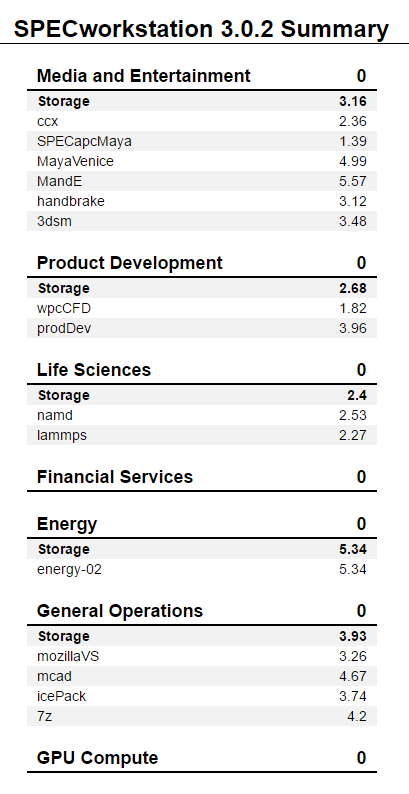
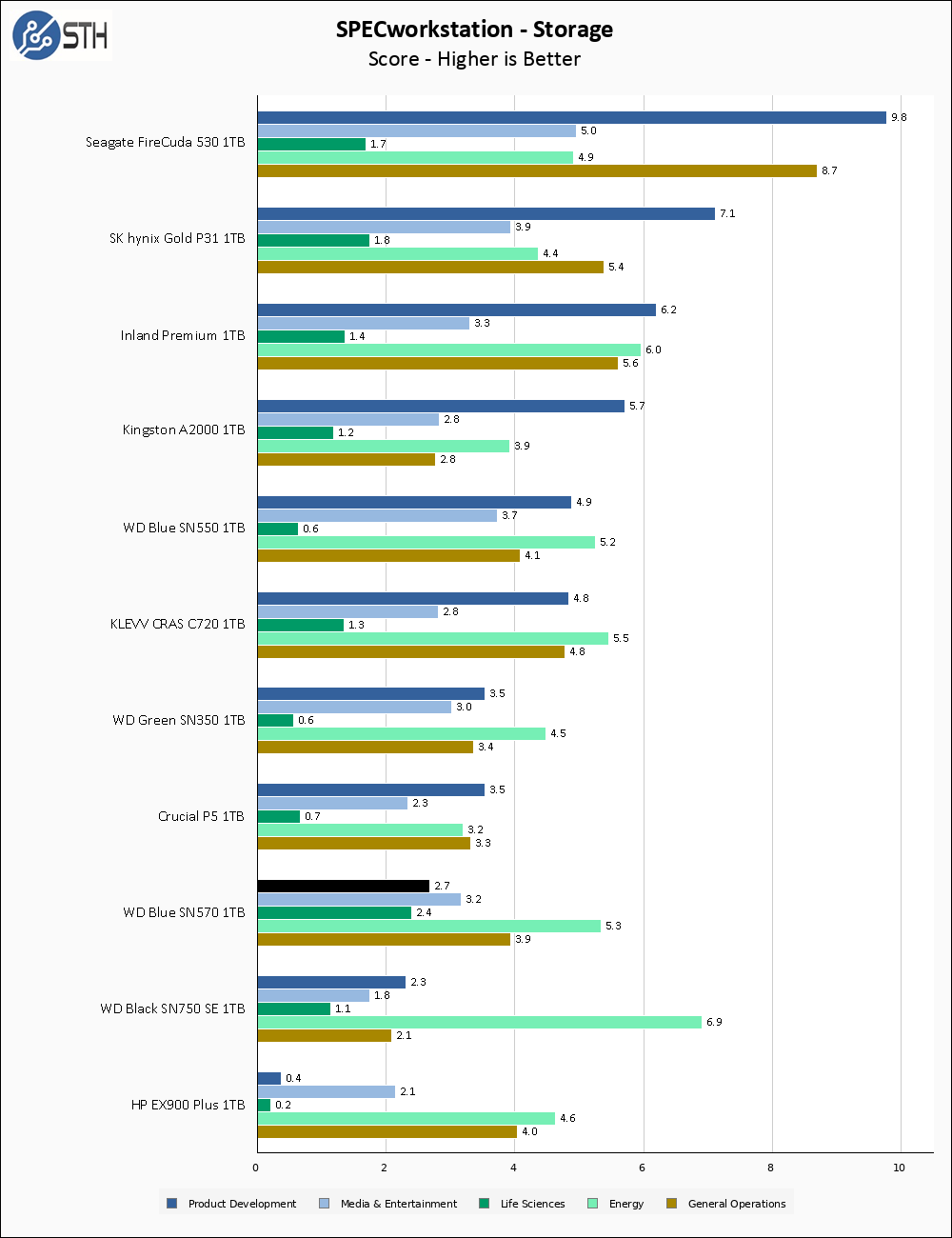
SPECworkstation performance for the WD Blue SN570 is wildly uneven. Product development is particularly low, but Life Sciences is chart-topping even over our high-end PCIe 4.0 drive in the FireCuda 530.
Sustained Write Performance
This is not necessarily a benchmark, so much as trying to catch the post-cache write speed of the drive. While I am filling the drive with data to the 85% mark with 10 simultaneous write threads, I monitor the drive for the write performance to dip to the lowest steady point and grab a screenshot.
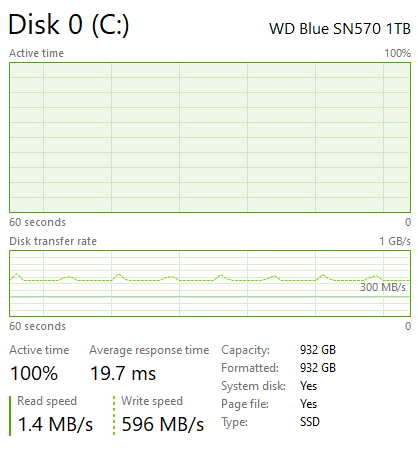
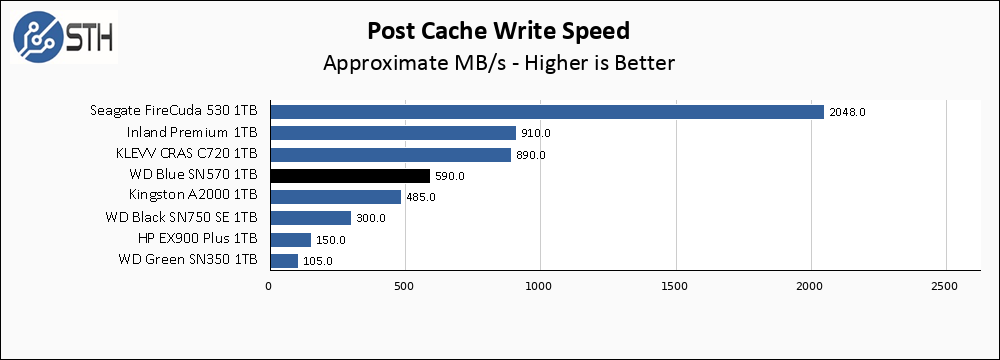
The Post-cache write speed on the WD Blue SN570 is pretty good and nearly reaches 600 MB/s. This is actually higher than the Green SN350 and the Black SN750 SE. One would expect the Blue to be better than the Green, but being better than a Black edition seems interesting.
Direct Comparisons
The easiest comparison to make is how the SN570 stacks up against its direct predecessor in the WD Blue SN550.
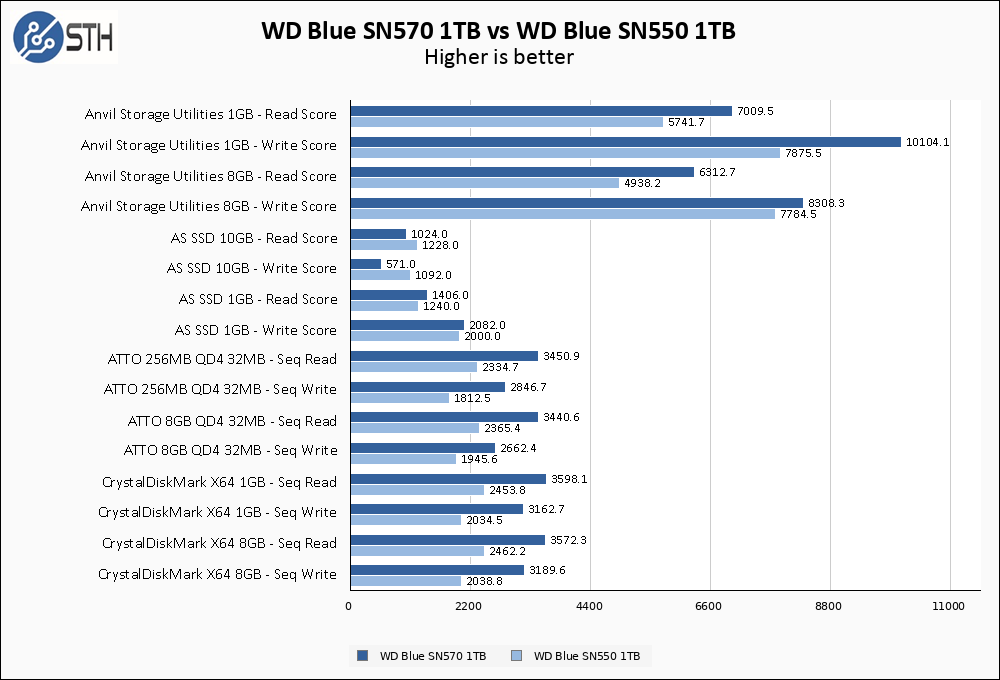
In every benchmark except the anomalous AS SSD, the SN570 is absolutely a clear winner over the SN550. This is exactly the kind of generation upgrade we want to see and is a far cry from the results achieved by the SN750 SE when compared to its predecessor in the original SN750.
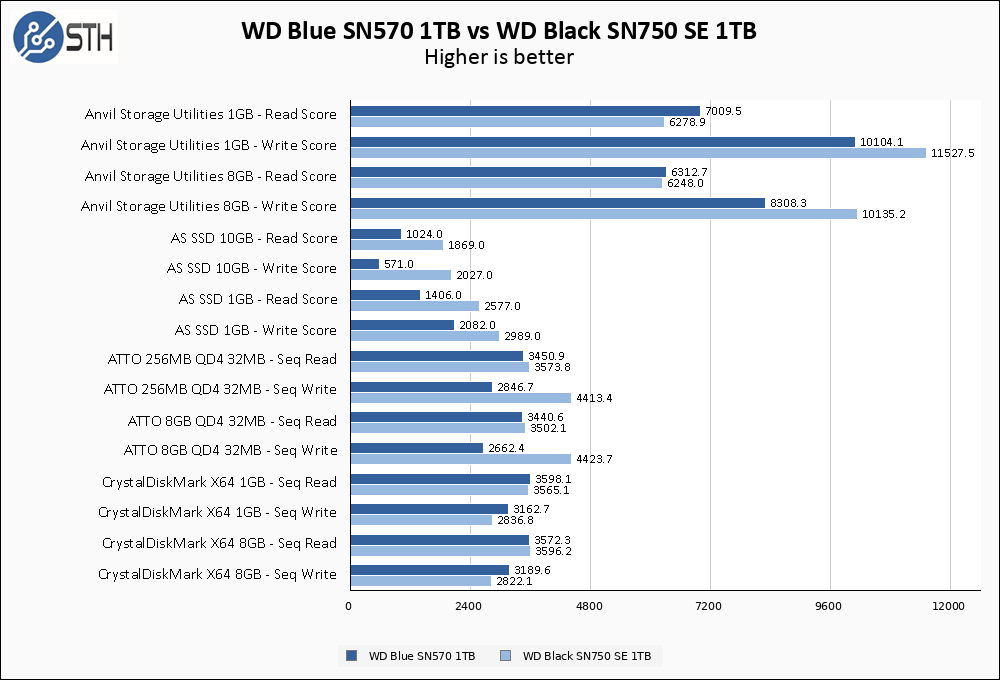
Speaking of the WD Black SN750 SE, the WD Blue SN570 stacks up fairly well against that drive despite its Black branding and PCIe 4.0 interface. While the SN750 SE does manage to squeak out a win more often than not, the margin is often very small, and the drives perform similarly much of the time.
Temperatures
We monitored the idle and maximum temperature during testing with HWMonitor to get some idea of the thermal performance and requirements of the drive. Please keep in mind that our test bench is an open frame chassis in a 22C room, but with no direct airflow. As a result, this is not representative of a cramped low airflow case and is instead intended to model temperatures of a drive ‘on its own’.

The WD Blue SN570 squeaks in on the right side of the 70C line, topping out at 68C under a sustained heavy load. For most users, no additional cooling should be necessary with this drive.
Final Words
Today the WD Blue SN570 1TB is $90 online. That price point is $10 more than the WD Green SN350, $5 less expensive than the Black SN750 SE, and $10 less than the Samsung 980. At $90, I consider the Blue SN570 a very good value for the money and the best purchase decision to make among those drives.
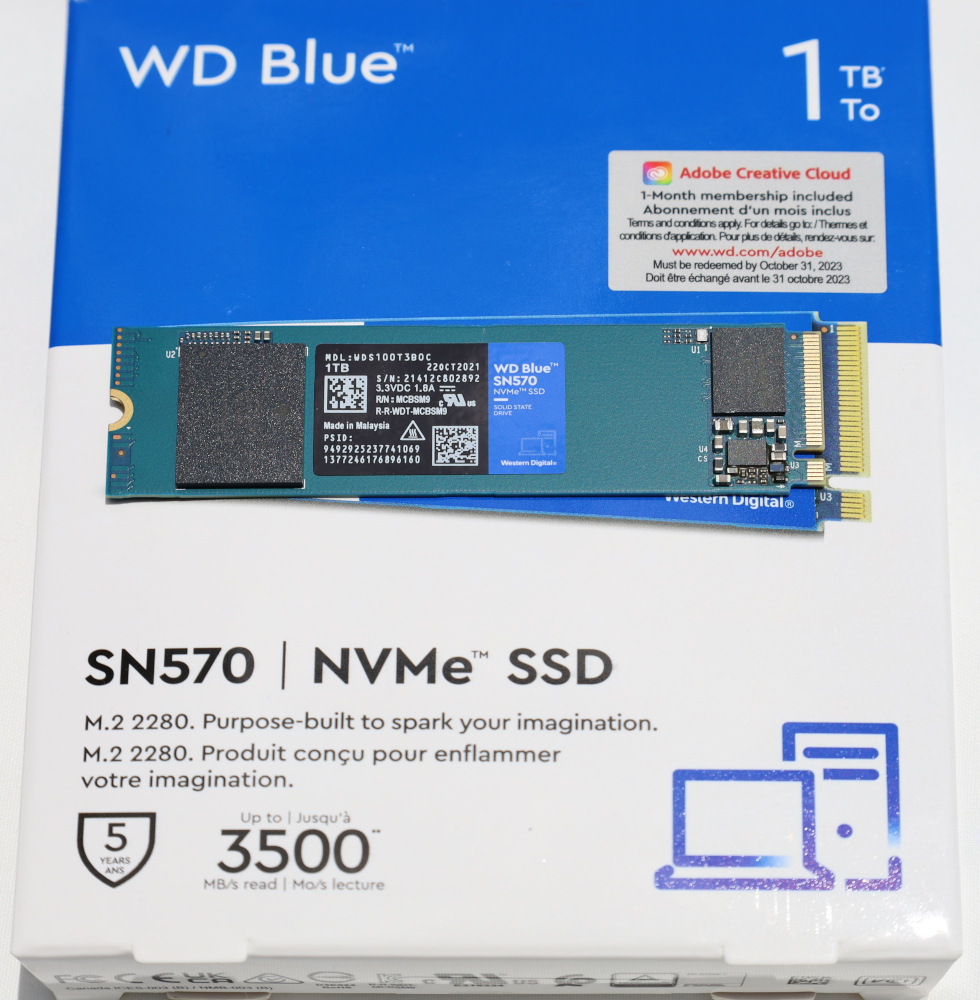
The WD Blue SN570 1TB is the type of generational performance upgrade that I want to see in a drive. The SN570 fulfills all the expectations that were left lacking by the SN750 SE, which left me overall disappointed. If you are in the market for a competent PCIe 3.0 SSD and the SN570 maintains its pricing advantage over its competitors, then this might be your best option.




This is really interesting, it’s great to see the capacities slowly creeping up. I’d also love to see some reviews of larger capacity SSDs, as replacing magnetic drives with SSDs seems to bring a lot of benefits that are worth the extra expense – lower power consumption, lower failure rate, higher performance even in cheaper SSDs, etc. But there don’t seem to be very many slower, cheaper, larger capacity SSDs on the market even though you’d think the technology would be there by now.
I think the issue there is a) if you don’t need speed and have the space, HDD is still cheaper, and b) if you do, they can charge a premium.
As for the performance issues, I wonder if it’s going into sleep mode between benchmark cycles? Or conversely hasn’t finished recovering turning SLC-cached writes into TLC.